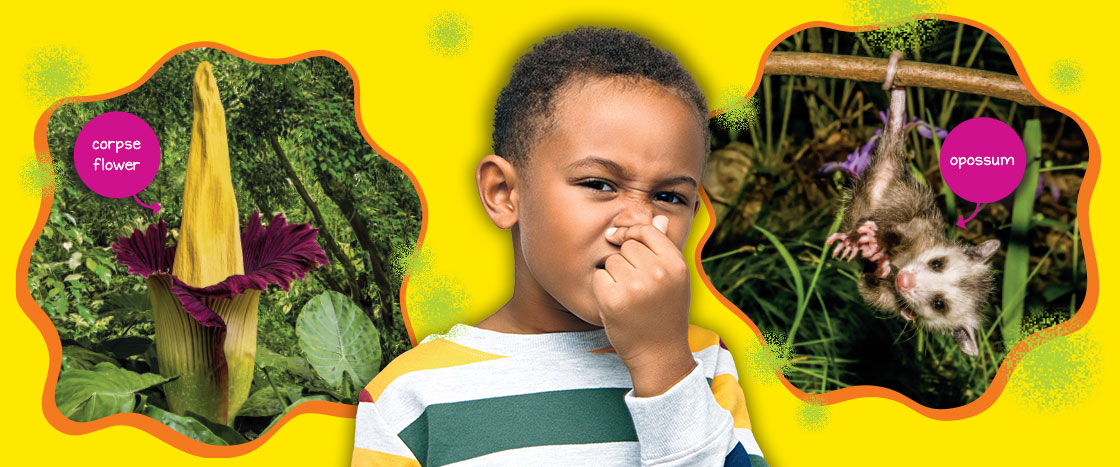Assessment Quiz (10 minutes)
- Pass out the quiz, which will help you assess students’ comprehension of the article.
- We offer multiple-choice and written-answer versions of the quiz.
ELA Focus: Compare and Contrast (15 minutes)
- Pass out our Venn diagram to help kids compare and contrast a corpse flower and an opossum.
ELA Focus: Key Details (20 minutes)
- It’s time to help Nosey fill out her Fact File! Kids can find three facts from the article.
- Kids can share their facts with a partner, with the whole class, or they can email their Fact Files to Nosey at nosey@scholastic.com!
Enrich the Learning: Paired Text Opportunities (time amount varies)
Making text-to-text connections builds knowledge and comprehension. We layer Storyworks 2 with many ways for your students to make connections. Pairable Texts Big Read, “The Invasion of Brood X” (pages 6-11); and Mini Graphic Novel, “Save That Mump!” (pages 13-17)
- These texts also ask questions similar to those posed in the Paired Texts. What makes something gross? How can different people find different things gross?
- Kids can compare the grossness in the texts using our “Gross-Out Chart” printable. How are the texts alike, and how are they different?


